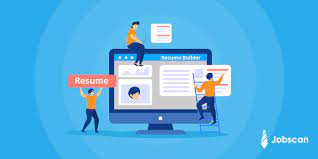A well-crafted resume is an essential tool for any job seeker, as it serves as a first impression to potential employers. A resume is essentially a marketing document that highlights your skills, experiences, and achievements in a concise and compelling manner. In this blog post, we will discuss the key components of a successful resume and provide tips for building an effective one.
Contact Information
The first section of your resume should include your name, phone number, email address, and any relevant social media handles or professional websites. This information should be easy to find and clearly displayed at the top of the page.
Summary or Objective
The next section of your resume should provide a brief overview of your skills, experiences, and career goals. This can be either a summary or an objective statement. A summary statement is a brief paragraph that highlights your most relevant skills and experiences, while an objective statement outlines your career goals and the type of job you are seeking.
Education
List your educational qualifications in reverse chronological order, starting with your most recent degree. Include the name of the institution, the degree earned, and the date of graduation. If you have any relevant certifications or professional development courses, list them under this section as well.
Work Experience
The work experience section of your resume should list your previous jobs in reverse chronological order. For each position, include your job title, the name of the company, the dates of employment, and a brief description of your responsibilities and accomplishments. Use bullet points to make it easy to read and highlight any quantifiable achievements or successes.
Skills
List your relevant skills in a separate section or integrate them into your work experience section. This can include both technical skills and soft skills, such as communication, teamwork, or leadership. Be sure to tailor your skills section to the job you are applying for.
Optional Sections
Depending on your background and experience, you may want to include additional sections, such as volunteer work, language skills, or hobbies. These can help provide a more well-rounded view of your personality and interests.
Tips for Building an Effective Resume
Keep it concise
Aim for a one-page resume whenever possible. Use bullet points and short sentences to convey information quickly and effectively.
Use keywords
Many companies use applicant tracking systems to screen resumes. To increase your chances of getting noticed, include keywords from the job posting in your resume.
Customize for each job
Tailor your resume to the specific job you are applying for. Highlight the skills and experiences that are most relevant to the position.
Be honest
Never lie or exaggerate on your resume. Employers can easily verify your employment history and qualifications, and dishonesty can lead to serious consequences.
Use a professional format and design
Choose a clean, easy-to-read font and use consistent formatting throughout your resume. Avoid using too many graphics or images, as these can be distracting.
Proofread carefully
Errors or typos can quickly undermine the credibility of your resume. Take the time to proofread carefully and ask someone else to review it as well.
In conclusion, a well-crafted resume can be the key to landing your dream job. By following these tips and including the essential components outlined above, you can create an effective marketing document that highlights your skills, experiences, and achievements in a compelling way.




